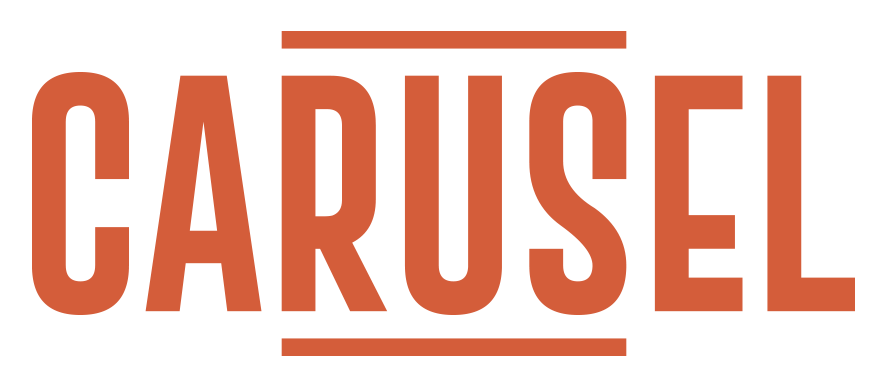20 October 2020
Complete Guide to Udelka Flea Market in St. Petersburg And Its Neighbourhood

I live near Udelnaya Flea Market and I come there often to find some antique gifts for my friends and family, or simply to observe other people and hear some interesting stories from them. I love this area with all my heart and I am happy to share my insights with you in this post!
Here you will read out about the history of the largest flea market in Russia and the Neighborhood of Udelnaya and Kolomyagi, what to find there and who to meet there. I will also give you a lot of tips that will help you prepare for your visit of Udelnaya Flea Market.
Here you will read out about the history of the largest flea market in Russia and the Neighborhood of Udelnaya and Kolomyagi, what to find there and who to meet there. I will also give you a lot of tips that will help you prepare for your visit of Udelnaya Flea Market.

The History and Present Days of Udelka
The Flea Market near Udelnaya Station, nicknamed Udelka by many, appeared there in the 1990-s when people were selling pretty much everything in an attempt to raise some money for a living. At that time, other similar markets around the city were funcioning but only the Flea Market at Udelnaya has continued to our days. Moreover, it has become the largest flea market in Russia and one of the most authentic in the world.
Several years ago, it was renovated and the management company that started developing this area has already done a lot to transform it from a hectic and pretty dirty place with no amenities to a pretty organized market with bio toilets, friendly atmosphere and covered stalls.
Of course, it is not that type of super stylish European flea markets where you can also get a gourmet brunch and sip some nice wine in the process of shopping, but it does offer more authentic snacks – try inexpensive hot tea from big pre-revolutionary wood-burning samovars, located in two various ends of the market and get some Russian pirozhki and middle-Asian samsa from market vendors!
The Flea Market near Udelnaya Station, nicknamed Udelka by many, appeared there in the 1990-s when people were selling pretty much everything in an attempt to raise some money for a living. At that time, other similar markets around the city were funcioning but only the Flea Market at Udelnaya has continued to our days. Moreover, it has become the largest flea market in Russia and one of the most authentic in the world.
Several years ago, it was renovated and the management company that started developing this area has already done a lot to transform it from a hectic and pretty dirty place with no amenities to a pretty organized market with bio toilets, friendly atmosphere and covered stalls.
Of course, it is not that type of super stylish European flea markets where you can also get a gourmet brunch and sip some nice wine in the process of shopping, but it does offer more authentic snacks – try inexpensive hot tea from big pre-revolutionary wood-burning samovars, located in two various ends of the market and get some Russian pirozhki and middle-Asian samsa from market vendors!

Tips Before Visiting the Flea Market
The market works on weekends and it is open from early morning until 5pm. Although some people like coming there around 7 am to get the chance to buy certain items directly from those who might bring them to sellers, most visitors arrive from 9 am to 12pm.
I believe that things are waiting for their owners and if they are doomed to be yours, you do not need to commit violence against yourself and come earlier than you want. My experience so far tells me that I am right – some items were waiting for me for months, as I was examining them from time to time during my visits before buying them finally at a better price.
Moreover, if you come around 4 pm, when the market is about to close, someday sellers (not the permanent ones) might be willing to get rid of the items that they have at symbolic prices – something that they would not do in the morning.
The market works on weekends and it is open from early morning until 5pm. Although some people like coming there around 7 am to get the chance to buy certain items directly from those who might bring them to sellers, most visitors arrive from 9 am to 12pm.
I believe that things are waiting for their owners and if they are doomed to be yours, you do not need to commit violence against yourself and come earlier than you want. My experience so far tells me that I am right – some items were waiting for me for months, as I was examining them from time to time during my visits before buying them finally at a better price.
Moreover, if you come around 4 pm, when the market is about to close, someday sellers (not the permanent ones) might be willing to get rid of the items that they have at symbolic prices – something that they would not do in the morning.
There are still quite a few articles about Udelnaya Flea Market on the Internet, written around 7-10 years ago, where it is described as a scary and wild place, so please keep in mind that fortunately it is not so anymore! For some reason search engines keep putting them in top results, but if you found our post, it means that you are already moving into the right direction.
However, there are a few points that you will need to keep in mind if you want to come back from the market with positive feelings:
- Although the market administration tries to keep an eye on pickpockets, they are still coming to the market to do their dirty job, especially on warm days, when there are a lot of people around. Their main target are the people that do not look like locals. My opinion is that there are not as many pickpockets there as in busy central areas of St. Petersburg, but forewarned is forearmed, right?
- If you are not a Russian language speaker, there are only a few covered pavilions where you will be charged the same price as the locals. These pavilions work on weekdays too and they offer genuine and higher-priced things in a better condition than you can find in the open territory of the market. If you want to enjoy browsing the open stalls in the search of a hidden gem, take your Russian friend with you or contact us!
- Another obstacle that is also relevant for us locals is the inability to bargain. I often fall into the same trap when I really like something and show my interest straight away. Don't do that! Better keep browsing the market and come back to the stall with this item later (if you still need it), and name the price that is around 20-30% less when what the seller wants. Some people ask for a 50% discount and, what is more surprising, they get it! Remember that as a foreigner you will automatically look as a wealthy enough person for most sellers, no matter how shabby your outlook will actually be.
- Don't buy things without thinking how you will take them out of the country. See the end of our post where I write about the export rules for valuable items.
- There are fakes on the market. Some of them are really evident, but as they are cheap, people still keep buying them. This is the case with pre-revolutionary coins.
I bought some fake coins myself once, 2 for the price of one (this trick works well not only with the happy hour drinks) and when I returned home, I remembered about all sorts of really genuine coins that I keep finding in our countryside garden since I was a baby and I felt so ashamed about this silly purchase that these fakes flew straight into the rubbish bin.
The other fakes are not so easy to distinguish and they mostly have to deal with "old" paper diplomas and documents, shoulder straps, etc. Sometimes not all art experts can tell if this is a fake or not. In that case, they make a picture of this item and send it to their colleagues. If you have doubts and do not have friends or time for an expertise, do not buy the items under question.
- In market pavilions, you can pay for your purchases by card, for street vendors please prepare cash. Of course, they can also receive instant wire transfers to their bank accounts, but I doubt that you have a Russian banking card for that. There are cash machines in the entrance and exit halls of Udelnaya Metro Station and in other locations around.
- If you come to the market on a rainy day or in winter time, when it is cold, there will be less sellers and people will not be selling things from the ground. On such days it makes sense to wear shoes that you don't mind getting dirty, as it might become really muddy.
- public toilets of Udelka get really dirty quickly. Alternatively, you can use other toilets in shop pavilions on the side of the market, that is closer to Udelnaya Metro Station, for a small fee.
- Although the market administration tries to keep an eye on pickpockets, they are still coming to the market to do their dirty job, especially on warm days, when there are a lot of people around. Their main target are the people that do not look like locals. My opinion is that there are not as many pickpockets there as in busy central areas of St. Petersburg, but forewarned is forearmed, right?
- If you are not a Russian language speaker, there are only a few covered pavilions where you will be charged the same price as the locals. These pavilions work on weekdays too and they offer genuine and higher-priced things in a better condition than you can find in the open territory of the market. If you want to enjoy browsing the open stalls in the search of a hidden gem, take your Russian friend with you or contact us!
- Another obstacle that is also relevant for us locals is the inability to bargain. I often fall into the same trap when I really like something and show my interest straight away. Don't do that! Better keep browsing the market and come back to the stall with this item later (if you still need it), and name the price that is around 20-30% less when what the seller wants. Some people ask for a 50% discount and, what is more surprising, they get it! Remember that as a foreigner you will automatically look as a wealthy enough person for most sellers, no matter how shabby your outlook will actually be.
- Don't buy things without thinking how you will take them out of the country. See the end of our post where I write about the export rules for valuable items.
- There are fakes on the market. Some of them are really evident, but as they are cheap, people still keep buying them. This is the case with pre-revolutionary coins.
I bought some fake coins myself once, 2 for the price of one (this trick works well not only with the happy hour drinks) and when I returned home, I remembered about all sorts of really genuine coins that I keep finding in our countryside garden since I was a baby and I felt so ashamed about this silly purchase that these fakes flew straight into the rubbish bin.
The other fakes are not so easy to distinguish and they mostly have to deal with "old" paper diplomas and documents, shoulder straps, etc. Sometimes not all art experts can tell if this is a fake or not. In that case, they make a picture of this item and send it to their colleagues. If you have doubts and do not have friends or time for an expertise, do not buy the items under question.
- In market pavilions, you can pay for your purchases by card, for street vendors please prepare cash. Of course, they can also receive instant wire transfers to their bank accounts, but I doubt that you have a Russian banking card for that. There are cash machines in the entrance and exit halls of Udelnaya Metro Station and in other locations around.
- If you come to the market on a rainy day or in winter time, when it is cold, there will be less sellers and people will not be selling things from the ground. On such days it makes sense to wear shoes that you don't mind getting dirty, as it might become really muddy.
- public toilets of Udelka get really dirty quickly. Alternatively, you can use other toilets in shop pavilions on the side of the market, that is closer to Udelnaya Metro Station, for a small fee.

Is It True That There Are Less And Less Valuable Items On Udelka?
This is the complaint #1 from most sellers and permanent buyers of Udelnaya Flea Market. When they say that, they mostly refer to pre-revolutionary, old Soviet and World War II items.
There is a surge of interest to these artefacts nowadays indeed and now it is harder to find such things as wooden spinning wheels and items from old peasant houses, samovars, war items, but there are more and more interesting household items from the 1950-s and up to 1980-s, including porcelain and Christmas tree decorations, glassware, that they can be better purchases for you, especially because they are normally not cultural value items.
I think that this is a logical process, because the time goes by and the items on sale on flea markets reflect that – today you can't buy a Van Gogh painting as easily and at the same price it used to have in the 1950-s, can you? Many items get more valuable with time – so maybe a Soviet aluminium mug from the 1970-s that you will buy at a bargain price on Udelka now will cost a fortune in 10 years.
How to Get to Udelnaya Flea Market
If you are going to Udelka on your own from central St. Petersburg, you can take a taxi or metro. It will be around 25-30 minutes in taxi on weekends (careful taxi drivers are not guaranteed). If you go by metro, take the blue line, that goes directly from Nevsky Prospect, in 15 minutes you will be on Udelnaya Metro Station. Exit it and find the Stone Building of Udelnaya Railway Station (trains to Zelenogorsk, Vyborg and Finland pass it), designed in Northern Revival Style by Bruno Granholm.
This is the complaint #1 from most sellers and permanent buyers of Udelnaya Flea Market. When they say that, they mostly refer to pre-revolutionary, old Soviet and World War II items.
There is a surge of interest to these artefacts nowadays indeed and now it is harder to find such things as wooden spinning wheels and items from old peasant houses, samovars, war items, but there are more and more interesting household items from the 1950-s and up to 1980-s, including porcelain and Christmas tree decorations, glassware, that they can be better purchases for you, especially because they are normally not cultural value items.
I think that this is a logical process, because the time goes by and the items on sale on flea markets reflect that – today you can't buy a Van Gogh painting as easily and at the same price it used to have in the 1950-s, can you? Many items get more valuable with time – so maybe a Soviet aluminium mug from the 1970-s that you will buy at a bargain price on Udelka now will cost a fortune in 10 years.
How to Get to Udelnaya Flea Market
If you are going to Udelka on your own from central St. Petersburg, you can take a taxi or metro. It will be around 25-30 minutes in taxi on weekends (careful taxi drivers are not guaranteed). If you go by metro, take the blue line, that goes directly from Nevsky Prospect, in 15 minutes you will be on Udelnaya Metro Station. Exit it and find the Stone Building of Udelnaya Railway Station (trains to Zelenogorsk, Vyborg and Finland pass it), designed in Northern Revival Style by Bruno Granholm.

Turn right and leave it on your left-hand side behind you, you will see some street vendors, mostly elderly women selling berries, mushrooms and flowers in season, and all type of used items throughout the year. This is not the flea market yet, go forward, the railroad will be on your left.
Find the unregulated pedestrian crossing through Skobelevsky Avenue, cross it, turn left and cross the railroad tracks carefully (if the train is approaching and the local guard try to prevent people from crossing it please follow their advice). Behind the rail tracks on your right you will see the passage with lots of kiosks. Go through them and in around 2-3 minutes you will see the beginning of the Udelnaya Flea Market.
Find the unregulated pedestrian crossing through Skobelevsky Avenue, cross it, turn left and cross the railroad tracks carefully (if the train is approaching and the local guard try to prevent people from crossing it please follow their advice). Behind the rail tracks on your right you will see the passage with lots of kiosks. Go through them and in around 2-3 minutes you will see the beginning of the Udelnaya Flea Market.

Alternatively, you can use the underground passage next to the railway station pavilion and later go through two pedestrian crossings across Fermskoe Shosse and reach the market. By looking at our scheme you will easily figure out which route is more convenient for you.
Once you have made it to the Flea Market, you might want to go through its left or right side to reach its far end, and then come back checking the items on the opposite side. You will probably be impressed by its size and you will also get some idea on what to find there.
I live closer to the other side of the market and I always enter it from that side and move against the crowd, it does have certain convenience, as most people already lose their focus when they reach that end and do not notice some really interesting stuff.
Once you have made it to the Flea Market, you might want to go through its left or right side to reach its far end, and then come back checking the items on the opposite side. You will probably be impressed by its size and you will also get some idea on what to find there.
I live closer to the other side of the market and I always enter it from that side and move against the crowd, it does have certain convenience, as most people already lose their focus when they reach that end and do not notice some really interesting stuff.

Who Visits Udelnaya Flea Market?
Let me describe the most common categories:
- Tourists from all over Russia, former Soviet republics that are now independent states and all over the world.
- Migrants and people who want to save the money. They exclusively come to Udelnaya to buy cheap household items and clothes, they are not interested in hidden treasures
- Art lovers, artists, photographers and collectors, many of who actually work in various museums of Russia. Here you are likely to spot the local staff from the Hermitage, Russian Museum, Fabergé Museum, various museums devoted to Soviet Art, World Wars and exhibition halls.
Let me describe the most common categories:
- Tourists from all over Russia, former Soviet republics that are now independent states and all over the world.
- Migrants and people who want to save the money. They exclusively come to Udelnaya to buy cheap household items and clothes, they are not interested in hidden treasures
- Art lovers, artists, photographers and collectors, many of who actually work in various museums of Russia. Here you are likely to spot the local staff from the Hermitage, Russian Museum, Fabergé Museum, various museums devoted to Soviet Art, World Wars and exhibition halls.
- Resellers and restorers, who buy items that they will later get to the better condition and resell in antique shops or directly to their clients at a higher price
- Cinema and theatre people who are in constant search for the props for their productions. There you can spot some well-known Russian directors.
- Locals who come there to find gifts for their friends and family (just like I do from time to time)
- Lovers of vintage clothes, mostly young people, who are saving a lot of money when buying things from there. Some vintage outfits are brought from Europe.
What Will You Find On Udelnaya Flea Market?
I will not be writing about clothes, bags, shoes and household items from the recent past.
- Cinema and theatre people who are in constant search for the props for their productions. There you can spot some well-known Russian directors.
- Locals who come there to find gifts for their friends and family (just like I do from time to time)
- Lovers of vintage clothes, mostly young people, who are saving a lot of money when buying things from there. Some vintage outfits are brought from Europe.
What Will You Find On Udelnaya Flea Market?
I will not be writing about clothes, bags, shoes and household items from the recent past.
Various items from the Soviet Past
In the recent years, the most popular Soviet treasures are
- Christmas Tree Toys
- Soviet Porcelain and Glass, including figures of animals and people
- Czechoslovakian and Eastern German Porcelain and Glass
- Soviet books and reproductions of works of famous artists
- Soviet postcards
- Household items, particularly copper basins and pans (mind that sparkling ones cost twice the price of non-sparkling and in fact it is very easy to clean them at home)
- Toys
- Vologda lace
- Aluminium mugs and bottles
- Fashion jewellery, including lots of amber (you will need to tell the real one from fake amber)
- World War II Items. This category is very diverse and includes both items from battle fields and households, and all types of not-used ammunition from warehouses. These items were produces by the USSR and its allies, and Fascist Germany
In the recent years, the most popular Soviet treasures are
- Christmas Tree Toys
- Soviet Porcelain and Glass, including figures of animals and people
- Czechoslovakian and Eastern German Porcelain and Glass
- Soviet books and reproductions of works of famous artists
- Soviet postcards
- Household items, particularly copper basins and pans (mind that sparkling ones cost twice the price of non-sparkling and in fact it is very easy to clean them at home)
- Toys
- Vologda lace
- Aluminium mugs and bottles
- Fashion jewellery, including lots of amber (you will need to tell the real one from fake amber)
- World War II Items. This category is very diverse and includes both items from battle fields and households, and all types of not-used ammunition from warehouses. These items were produces by the USSR and its allies, and Fascist Germany
- Watch and Wall Clock
- Lanterns
- Photo cameras
- Numerous busts and portraits of Lenin and other Soviet leaders
- Communist slogans and banners from institutions, schools and factories
- Gramophone records
- Badges
- Coins and paper money of former communist countries
- Sewing machines
- Lanterns
- Photo cameras
- Numerous busts and portraits of Lenin and other Soviet leaders
- Communist slogans and banners from institutions, schools and factories
- Gramophone records
- Badges
- Coins and paper money of former communist countries
- Sewing machines
Antique objects from Imperial Russia and other countries
- Samovars and all the accessories for samovar tea ceremonies – trays, teapots, chimneys. There are less and less old samovars available
- Coins, medals, buttons, rings, paper money. Most of these items are dug out of the ground
- Icons
- Books, atlases and albums
- Furniture
- Carriage Clock and Wall Clock
- Lanterns
- Postcards with the views of the cities of the Russian Empire and greeting cards. On Udelka they cost on average 2 times less than in antique shops of central St. Petersburg.
There are a lot of painted postcards with the views of St. Petersburg – by looking at them you will see how some sights have changed or disappeared completely while others remain fairly the same.
- Samovars and all the accessories for samovar tea ceremonies – trays, teapots, chimneys. There are less and less old samovars available
- Coins, medals, buttons, rings, paper money. Most of these items are dug out of the ground
- Icons
- Books, atlases and albums
- Furniture
- Carriage Clock and Wall Clock
- Lanterns
- Postcards with the views of the cities of the Russian Empire and greeting cards. On Udelka they cost on average 2 times less than in antique shops of central St. Petersburg.
There are a lot of painted postcards with the views of St. Petersburg – by looking at them you will see how some sights have changed or disappeared completely while others remain fairly the same.
Take a look at the backside of some of these postcards and you will notice that many of them are signed in various European languages (German, French, Swedish, Polish). St. Petersburg was really an international city before the revolution and the predominant middle class society that sent these postcards consisted of various European diasporas.
History and ethnography buffs like unwinding stories behind such postcards with the help of archive materials.
History and ethnography buffs like unwinding stories behind such postcards with the help of archive materials.
- Old photography, including stereo photography
- Imperial Porcelain and Glass
- Glass bottles
- Wooden antique objects from old houses and villages, such as fragments of carved window frames, spinning wheels, boxes
- Toys and Dolls
If you are interested in getting to know more about any of these items, please contact us. We will be happy to help!
- Imperial Porcelain and Glass
- Glass bottles
- Wooden antique objects from old houses and villages, such as fragments of carved window frames, spinning wheels, boxes
- Toys and Dolls
If you are interested in getting to know more about any of these items, please contact us. We will be happy to help!

Why buying on Udelka?
In the society that has started to think about the consequences of over-consuming at last, buying the antique or second-hand objects is another way to give new life to old things. Besides, flea market findings can serve as genuine souvenirs from Russia that you won't get from a typical souvenir shop, of higher quality and for less money!
Most Soviet items were actually made in the Soviet Union, the country that do not exist anymore and not in China*, where most modern Russian souvenirs are produced.
*I do not want to offend the Chinese people, their scale of production is really impressive – you get Chinese-made souvenirs from most countries that you visit.
Exporting Valuable Items from Russia
It is a complicated issue that I will not discuss in detail here. Just a few highlights that you need to know before buying any treasures from Udelka:
- Officially all items created more than 100 years ago can be taken out of the country only with the special permission that could be granted after an expertise and they should be additionally declared at the border. Such permissions should definitely be received for icons and old books. On the other hand, ordinary postcards, buttons and coins are less likely to attract the attention on the Russian border, but if they do, you will also need to have this permission at hand.
- The same applies to the war items, coins, banknotes and numismatics created more than 50 years ago; watch, clock, furniture, clothes, shoes and hand weaving created before 1945.
A description of what is an object of "cultural value" under Russian legislation dates back to the 1990-s and it was created when many antique or really valuable objects were taken out of the country in huge numbers. It is very vague and it does not give a clear answer on what kind of objects can really be called "items of cultural value". Therefore, our customs officials will not pay much attention to most Soviet-era objects, glass bottles, old postcards and other bric-a-brac found on Udelnaya Flea Market.
However, I strongly advise you to receive the special permission on export from the authorities for icons or old clock/watch, if you decide to purchase any of them. Particularly icons require special attention from your side. Even if you buy a modern icon, do not throw away the receipt, you might be asked to show it at the border.
If the permission on the export of cultural value items is received and you are going to have these items as your own (that is not for sale), you are not required to pay an export fee.
In the society that has started to think about the consequences of over-consuming at last, buying the antique or second-hand objects is another way to give new life to old things. Besides, flea market findings can serve as genuine souvenirs from Russia that you won't get from a typical souvenir shop, of higher quality and for less money!
Most Soviet items were actually made in the Soviet Union, the country that do not exist anymore and not in China*, where most modern Russian souvenirs are produced.
*I do not want to offend the Chinese people, their scale of production is really impressive – you get Chinese-made souvenirs from most countries that you visit.
Exporting Valuable Items from Russia
It is a complicated issue that I will not discuss in detail here. Just a few highlights that you need to know before buying any treasures from Udelka:
- Officially all items created more than 100 years ago can be taken out of the country only with the special permission that could be granted after an expertise and they should be additionally declared at the border. Such permissions should definitely be received for icons and old books. On the other hand, ordinary postcards, buttons and coins are less likely to attract the attention on the Russian border, but if they do, you will also need to have this permission at hand.
- The same applies to the war items, coins, banknotes and numismatics created more than 50 years ago; watch, clock, furniture, clothes, shoes and hand weaving created before 1945.
A description of what is an object of "cultural value" under Russian legislation dates back to the 1990-s and it was created when many antique or really valuable objects were taken out of the country in huge numbers. It is very vague and it does not give a clear answer on what kind of objects can really be called "items of cultural value". Therefore, our customs officials will not pay much attention to most Soviet-era objects, glass bottles, old postcards and other bric-a-brac found on Udelnaya Flea Market.
However, I strongly advise you to receive the special permission on export from the authorities for icons or old clock/watch, if you decide to purchase any of them. Particularly icons require special attention from your side. Even if you buy a modern icon, do not throw away the receipt, you might be asked to show it at the border.
If the permission on the export of cultural value items is received and you are going to have these items as your own (that is not for sale), you are not required to pay an export fee.

Neighbourhood of Udelnaya and Kolomyagi
The flea market is located in an interesting neighborhood, that has suffered a lot since the 1990-s because many of its authentic wooden buildings have been destroyed, but it retained a certain charm. First of all, it used to be the area where middle-class St. Petersburgers before the revolution would come for the summer and it had a lot of large country houses or dachas that would be rented out partially to them. In the Soviet epoch most of these buildings were turned into shabby communal apartments.
A few of these houses have survived, mostly thanks to the artists who occupied some of these buildings in the 1990-s, when they were abandoned by their communal dwellers and left in a terrifying condition, and we actually offer you a tour where you can visit one of these houses and talk to the artists who are working there after the Flea Market Visit. This area is called Kolomyagi, it is the Finnish toponym, meaning "some kind of the hill" (now it is not clear exactly what).
The flea market is located in an interesting neighborhood, that has suffered a lot since the 1990-s because many of its authentic wooden buildings have been destroyed, but it retained a certain charm. First of all, it used to be the area where middle-class St. Petersburgers before the revolution would come for the summer and it had a lot of large country houses or dachas that would be rented out partially to them. In the Soviet epoch most of these buildings were turned into shabby communal apartments.
A few of these houses have survived, mostly thanks to the artists who occupied some of these buildings in the 1990-s, when they were abandoned by their communal dwellers and left in a terrifying condition, and we actually offer you a tour where you can visit one of these houses and talk to the artists who are working there after the Flea Market Visit. This area is called Kolomyagi, it is the Finnish toponym, meaning "some kind of the hill" (now it is not clear exactly what).

The area alongside the flea market belongs to one of the oldest mental institutions of the country. It was founded during the reign of emperor Alexander III and it had both houses for the nobility and common people.
You can see the brown wooden church in front of the main entrance to the Flea Market from Fermskoe Shosse – it is the oldest church of the neighborhood, although it belonged to the mental institution, it was open to the general visitors. After the decay of the Soviet Epoch it has been recently restored and now again everyone can visit it! If you stay in front of it, you might notice some wooden houses in Art Nouveau and Pseudo Russian Styles behind the fence – these are the old mental hospital buildings where no major renewals have been made since the day they were constructed.
Another beautiful old church is located around a 10-min walk from the Flea Market. It was built on the money of Kolomyagi peasants, merchants and noble people before the revolution and it was functioning during the Soviet time, which is a miracle on its own.
The word Udelnaya that gave the name to the railway and metro stations, and the flea market comes from the agricultural school that was founded there by Alexander I in the beginning of the 19th century. It had various agricultural territories or Udels in old Russian. Sadly, almost nothing has survived from the school - its main building, that was made of wood and located just opposite the railway crossing, was burned down in the 2000-s. The name of the street alongside the Flea Market, Fermskoe Shosse or Farm Highway in Russian is also from that period.
That is all that I wanted to tell you in this post, I really hope that you will find it useful and that it will help you prepare for the visit of Udelnaya Flea Market when you are in St. Petersburg!
Please address me any of your questions about the flea market and I will be happy to answer them!
Text by Alexandra Carusel Tours
You can see the brown wooden church in front of the main entrance to the Flea Market from Fermskoe Shosse – it is the oldest church of the neighborhood, although it belonged to the mental institution, it was open to the general visitors. After the decay of the Soviet Epoch it has been recently restored and now again everyone can visit it! If you stay in front of it, you might notice some wooden houses in Art Nouveau and Pseudo Russian Styles behind the fence – these are the old mental hospital buildings where no major renewals have been made since the day they were constructed.
Another beautiful old church is located around a 10-min walk from the Flea Market. It was built on the money of Kolomyagi peasants, merchants and noble people before the revolution and it was functioning during the Soviet time, which is a miracle on its own.
The word Udelnaya that gave the name to the railway and metro stations, and the flea market comes from the agricultural school that was founded there by Alexander I in the beginning of the 19th century. It had various agricultural territories or Udels in old Russian. Sadly, almost nothing has survived from the school - its main building, that was made of wood and located just opposite the railway crossing, was burned down in the 2000-s. The name of the street alongside the Flea Market, Fermskoe Shosse or Farm Highway in Russian is also from that period.
That is all that I wanted to tell you in this post, I really hope that you will find it useful and that it will help you prepare for the visit of Udelnaya Flea Market when you are in St. Petersburg!
Please address me any of your questions about the flea market and I will be happy to answer them!
Text by Alexandra Carusel Tours
